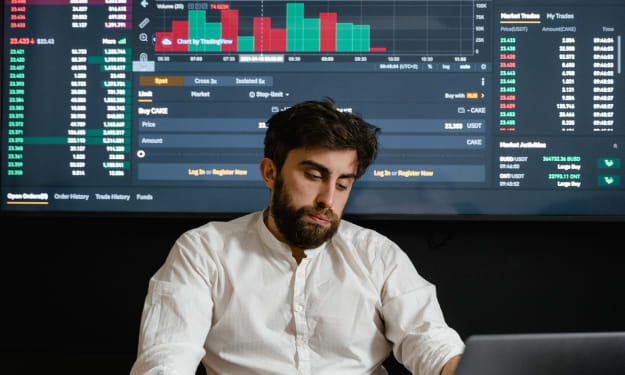The One Secret That Determines Whether You Can Beat Trading The Markets
Some high-level EDGE-cation for ya!!!

No, it's not your education, years of experience, or how much money you have in your trading account. While these factors play a role, they are not as crucial as having an edge.
It's the defining factor on whether you can 'outsmart' the markets. And yes, you have to be a LOT smarter than it to be successful.
Having an edge
Investopedia's definition of an edge is best:
"A trading edge is a technique, observation or approach that creates a cash advantage over other market players."
The essential part is 'cash advantage,' meaning that you have proven your edge to yield a positive bottom line over time. No matter how skilled or educated you are, losses are inevitable in any traded market.
It's a painful truth for every trader. But your edge ensures you extract more money in the long run. I also like to think of an edge as that 'secret' you have that only you or a few people know.
This could be:
- A unique chart pattern
- A piece of technology or indicator used by a few (or a different way of using these)
- A mindset shift
- Access to potent information not found in the mainstream
- The timing of your entries and exits
- An exploitable advantage you've picked up about one market over another
Another crucial thing to understand is that traders have more than one edge. The combination of these would make them competent enough to succeed.
How the market is always right
While I'm not big on theories, the efficient market theory is a daily challenge for traders.
Technical definition: asset prices reflect all available information, making them 'efficient.'
Simpler definition: the market is very, very smart and challenging (but not impossible) to beat.
Sometimes we underestimate how difficult it is to be profitable. Just when you think you've found a 'loophole' every time, the market invalidates it.
In my rookie days, I thought that hedging was flawless. If one position ran at a loss, you simply had to trade in the other direction, right? Well, as you closed that, the new order may itself turn into a loss if the price again goes in the opposite direction.
Ultimately, I always had to close an order with a loss. This is one example of how intelligent the market is. It's always three steps ahead of traders.
Yet, you will find a few small weaknesses to exploit by going through every nook and cranny, which is where your edge comes in.
Why an edge is more important than a strategy
Traders are always creating strategies. While it's the blueprint to making profits, it can become an addictive buzzword. Without understanding what makes a strategy tick and different from the rest, it's useless.
Take any moving average crossover moving system. You can hand this overly simple strategy to anyone, but it will only work once the trader has figured out the best conditions.
Strategy: open a position once the 5 and 10 MAs cross; close in profit once they've crossed again; stop loss below/above the nearest low/high.
Defining the edge:
- What are the best and worst times to use this strategy?
- Does it work better on certain markets than others (maybe you need to use it only a handful)
- Are there better MA periods that offer more reliable crossovers?
- What is a consistent risk-to-reward ratio that will offer greater profits in the long run?
- and so on
As you can see, the strategy is a set of instructions, but the edge is the spice in those rules, making them formidable against the market.
A common occurrence is for traders to 'strategy-hop,' where they go from one strategy to another. This happens earlier in their careers (I'm also a victim).
It took a few years before I realised I needed to find what was special about the strategy and whether it gave me a long-lasting cash advantage. Although trading is more of an internal battle, your strategy must be better than the market.
Closing thoughts: finding an edge
Now, the golden question: how do you find an edge? Unless you copy one, this is something that you develop over time through experience.
Whatever it is, you must have solid proof that it produces profit-yielding results over an extended period. Traders achieve this through various types of testing and gathering as much data as possible. This is essential because you will have losses in between, but your edge should prevail.
Your edge should also fit with your personality and trading style. For instance, I swing-trade the markets, where I only find my edge 2-3 times a month. This may be too rare for others, but it's where everything lines up perfectly, according to my experience.
Overall, an edge isn't a 'mystical crystal ball' that means you'll never lose. Instead, it can be the simplest thing ever, even if you may treat it as a guarded secret.
What matters is having proof of it working repeatedly and being disciplined enough to execute it every time.
About the Creator
Langa Ntuli
- fascinated by the financial markets & TradingView charts. Freelance writer @upwork (www.upwork.com/freelancers/langan)
Medium account: medium.com/@lihle_ntuli
Also a humble music nerd, football fan, knowledge hoarder, peace/love extremist.






Comments
There are no comments for this story
Be the first to respond and start the conversation.